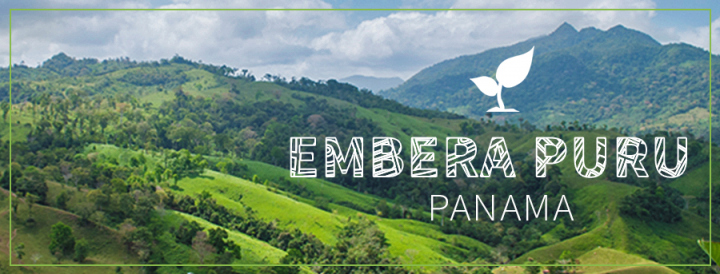About Embera Puru
Embera Puru is an indigenous Emberá community of about 44 homes and
266 inhabitants. It is located in the district of Chepigana along the Pan
American highway in the province of Darien. Embera Puru is a farming and
artisan community. Community members cultivate rice, yucca, yams, or
otoe, a root vegetable. The women also tend to work on the farms, make
traditional crafts, or take care of the home. Several families raise chickens
and pigs for personal consumption. As one of Global Brigades Panama’s
holistic communities, medical/dental brigades conduct mobile clinics, public
health brigades build composting latrines, business brigades consult local
microenterprises and provide financial education to community bank
members, and Environmental brigades have recently begun working on the
Model Farm.
Embera Puru's Environmental Challenge
The majority of community members depend on the land for their livelihoods
including income, daily subsistence, traditional art crafts, and construction of
traditional Embera Puru's family dwellings. The environment is currently
threatened by both external forces in the region at large and internal
unsustainable cultural norms that result from lack of education. On a micro
level, Embera Puru practices unsustainable agricutlure techniques, such as
slash-and-burn, monoculture, and the use of chemical fertilizers and pesticides.
Slash-and-burn is a method that depletes nutrients every crop cycle and over
time will lead to completely infertile land. These practices combined with
monoculture style and limited crop varieties in the area threaten these
communities most precious resource—their land.
In addition, there is no existing system of waste management in the community. Most families will burn their trash or throw it in the river, for lack of options and awareness of the harmful effects of these practices. All of Panama, and in recent decades Eastern Panama in particular, has been threatened by rapid deforestation and soil erosion due to cattle ranching, logging, and colonization of highly forested areas. Large tracts of land at extremely low prices has favored rapid, unsustainable expansion and attracted teak tree farms and cattle ranches, both of which devastate native species.
The Environmental Solution for Embera Puru
Environmental Action
Environmental Brigades' projects are rooted in techniques of permaculture. The community's Model Farm project works primarily with the adults of the community and addresses the environmental issue of unsustainable farming practices. The Model Farm, constructed on communal land, servces as a small-scale example field of permaculture style farming. It consists of different components of crops, such as cocobolo trees, plantains, and coffee, and livestock, such as a chicken coop. Due to the lack of direct access to a reliable water source in Embera Puru, the Model Farm will not have a tilapia pond, cassava, or corn since they need a lot of water. As a community of farmers, this project capitalizes on the community’s assets and promotes native species growth and soil fertility, all while providing sustainable methods for their agricultural based income.
Environmental Education
In addition to the hands on projects, an important part of Environmental Brigades work in Ipeti Embera is the education workshops given by brigaders with the support of the Environmental team. Past workshop in other communities include topics such as organic fertilizers, composts, pest and disease control, plant health, greenhouse maintenance, and waste management and the ecological effects of improper waste disposal. Future brigaders will reinforce these topics with the schoolchildren, as well as the adults of the community.
| Environmental Brigades Chapters that Worked in Embera Puru |
|||
| Environmental Brigades Chapter | Month | Volunteers | Model Farm Components |
| Stony Brook University & Washington University at St. Louis | January 2013 | 22 | - |
| Columbia University | January 2013 | 9 | - |
| North Carolina School of Science and Mathematics | February 2013 | 9 | - |
| University of Southern California & University of Illinois Urbana-Champaign |
March 2013 | 20 | - |
| Loyola University of Chicago & Boston University | May 2013 | 9 | - |
| Seattle University | June 2013 | 9 | - |
| Ball State University | December 2013 | 15 | - |
| UC Davis, UC Irvine, UCLA, UC San Diego | June 2014 | 21 | - |
| CUNY Macaulay | August 2014 | 30 | - |
| Penn State University | March 2015 | 26 |
Rancho (construction) Prepare land for planting |
| CUNY Brooklyn | June 2015 | 26 |
Plaintains (planting), Make compost for land |
Visit Other Programs in Embera Puru
Global Brigades strives to implement a model of Holistic Development in communities through a system of collectively implementing health, economic, and education initiatives to strategically meet a community's development goals. Learn more about the other programs being implemented in Embera Puru:
![]() Business
Business ![]() Dental
Dental ![]() Human Rights
Human Rights ![]() Medical
Medical ![]() Microfinance
Microfinance ![]() Public Health
Public Health
| Model Farm Project Overview |
|
| Beneficiaries | 53 |
| Volunteers | 52 |
|
Components of the Model Farm Implemented: |
3 |
| Hours of Education |
0 |
| Additional Information |
| General Community Profile |
| Environmental Page |
| Environmental Committee Profile |
| Pre-Brigade Lesson Plan |
| On-Brigade Lesson Plan |
| Education Guide |
